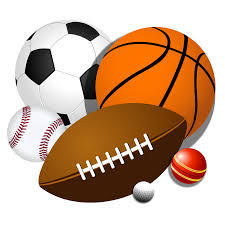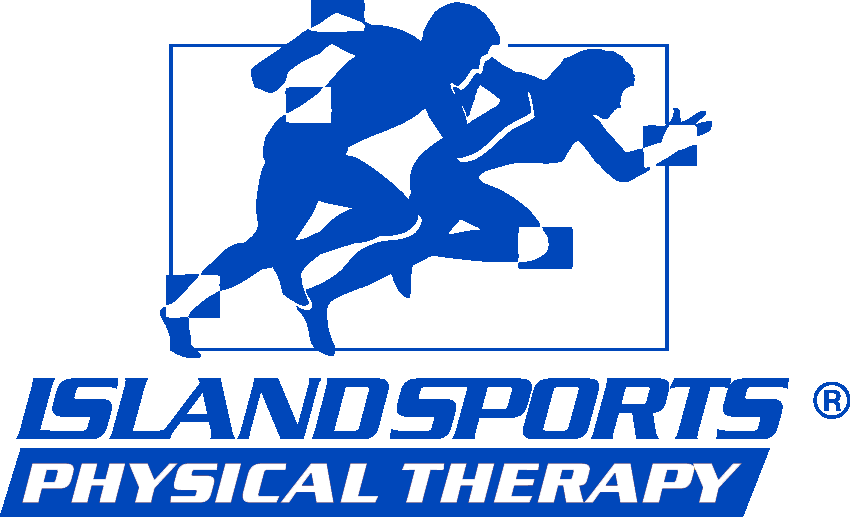
Golf Safety
With summer in full swing, everyone wants to get outside and hit the links for some leisure and some fun with friends. When out golfing it is important to practice safety strategies so that you can get through a full round of 18 holes without any negative side effects happening.
Most people would tend to think of golf as being one of the safest sports out there. For many cases, this may be correct. However, because of the physicality of the sport, injuries can happen and it is important to be proactive. Like with any sport, it is important that you have a thorough warm up before participating in it. In order to protect yourself from injury, doing dynamic stretching is important to getting your muscles prepper for the activity ahead is beneficial. For golf in particular, focusing on the arms, shoulders, and abdomen is the correct first step.
It is also a known fact by many health professionals that carrying a golf bag that is too heavy can lead to back problems such as poor alignment. Leaving your golf bag on a golf cart or using a push cart is a safer method. If you have tension in your back before you even start the game you can be further injured when swinging the golf club.
Another thing to be on the lookout for while on the course is stray golf balls. Not everyone who is playing golf on your course is a seasoned golfer and sometimes people hit their ball array. Also if you do shank your ball, make sure to yell fore so fellow golfers know to take cover: It is proper etiquette and is a safe method. Another thing to be aware of is the weather, many golf courses like the beautiful golf courses in Smithtown, New York such as Smithtown Landing are open courses which leave you unprotected from the sun. Staying hydrated and wearing a proper hat and sunscreen will protect yourself from potential heat illness or sunburn.
Golfing is a great sport and is a fun and social activity to enjoy with friends or work colleagues. It is a great way to get outside and enjoy the weather as well as get some exercise. By practicing good safety techniques, it will allow you to have the most enjoyable experience possible for games to come.
 May is National Fitness and Sports Month
May is National Fitness and Sports Month
A lot of people don’t know that May is National Physical Fitness and Sports Month. Founded by the President’s Council on Fitness, Sports, and Nutrition (PCFSN). National Physical Fitness and Sports Month were founded in 1983 by the Council with the mission to bring awareness to Americans to stay physically fit, eat well, and stay active throughout the month of May. By doing so, you’re promoting a healthy lifestyle for yourself and for others around you. And in the long run, those healthy habits that you develop could become permanent.
Island Sports Physical Therapy (ISPT) is proud to take part in National Physical Fitness and Sports Month, by promoting the importance of staying physically fit and active to its patients. With locations in East Northport, Huntington, Nesconset, and Coram, ISPT is dedicated to providing its patients with the utmost care that they need during their time of rehabilitation. Their highly trained, and compassionate team of Physical Therapists provide world-class treatment that you will not find anywhere else on Long Island. With a hands-on approach, ISPT specializes in Orthopedic and Sports Therapy, Spinal Rehabilitation, Geriatric Rehabilitation, and Personal Wellness.
In an article written by the department of Federal Occupational Health (FOH) called, Rise to the President’s Challenge… Make physical activity part of your life, they mention that adults should be getting at least two-to-two and a half hours of moderately to vigorously physical activity each week. You can do this by spreading it out any way you desire, a half an hour each day, or one hour two days a week.
The health benefits of doing these exercises are excellent for your overall well-being. FOH states that by doing these weekly exercises you can help you maintain a healthy weight, lower your cholesterol, lower your blood pressure, strengthen muscles and bones, reduce your risk for heart disease, diabetes, some cancers, and obesity.
Other ways you can stay physically fit and active is by joining a community sports league of some sort. Almost every community offers some sort of sports league that you can get involved in. It is a great way to connect with the people in your community, and also an excellent way to get in shape and keep yourself active. The FOH states that by joining a community league you, provide yourself with the opportunity to connect with others, lift your spirits, and it gives you a new outlook on a problem or project.
Not only are the health benefits of staying physically fit and active crucial to your physical well-being, but they are also crucial to your overall mental well being. Be active in your community and make a difference while at the same time improving your health. Your body will thank you in the long run.
Physical Therapy for Neurological Rehabilitation
Nervous system damage can be caused by various conditions or disorders such as stroke, Parkinson’s, cerebral palsy, and multiple sclerosis. Physical therapy for treatment or recovery, also known as neurorehabilitation, aims to help patients successfully overcome these ailments. The process can be long and quite arduous as some patients must either learn a “new way” to live, or slowly recover functionality that may have been lost due to the condition or disease. If there has been brain or spinal damage, neurorehabilitation aims to have the patient gain independence and help families cope with the change and adapt to this new way of living that physical therapy hopes to develop.
Neurorehabilitation uses the skills and abilities that have not been compromised by the condition or disease in order to find the highest order of independence possible. Damage to the nervous system can take away the most basic of functions for a patient, and getting them back to living a normal life the best way they can is the ultimate goal. Physical therapy can help patients find a way to live with the condition, find happiness, and regain lost self-esteem due to the condition or the disease.
The nervous system is repaired through increasing the patient’s well being while training or re-teaching patients various mobility, communications, or occupational therapies while aiming to restore the person back to a normal, daily routine. Neurorehabilitation uses a wide variety of different methods to do this, including holistic approaches, while focusing on nutrition and creativity in order to get the patient back on his or her feet. Speech therapy is also a big part of neurorehabilitation as these conditions or diseases may cause a patient to lose cognitive and speaking abilities, and with the advancement of science and technology, these therapies are helping people more and more with their recovery.
Are You Suffering from Chronic Fatigue?
If you have ever felt tired or fatigued after physical activity, it will normally disappear shortly after a good rest. Imagine if that tired feeling, loss of energy, or joint pain continued on well past the time of physical activity. Chronic fatigue syndrome is a disorder where that tired feeling never goes away, and can last for months or maybe longer depending on the case or the person.
Chronic fatigue syndrome, or CFS, is characterized by overwhelming fatigue not improved by bed rest which that can get worse after physical activity or excessive mental exertion. Chronic fatigue syndrome is very hard to pinpoint and diagnose as the symptoms have to have been going on for some time and a certain amount of symptoms are required before a proper diagnosis can be reached.
Chronic fatigue syndrome has many symptoms as fatigue, in general, can be a symptom for many diseases or disorders. It is sometimes misdiagnosed because of the broad list of symptoms. In order to be diagnosed with CFS, it is required to have unexplained or persistent fatigue lasting at least 6 months, in addition to having at least 4 out of 8 of the following symptoms:
- sore throat
- memory/concentration loss
- enlarged lymph nodes
- joint pain with no swelling/redness
- headaches or new types/patterns of severity
- unrefreshing sleep
- unexplained muscle pain
- extreme exhaustion lasting more than 24 hours after physical or mental exercise
Doctors and scientists have yet to be able to determine what exactly causes chronic fatigue syndrome, but it’s possible that viral infections, immune dysfunction, abnormally low blood pressure, nutritional deficiency, or even stress can be considered triggers. Diagnosing chronic fatigue syndrome is usually done only after ruling out other possible illnesses, as to be sure it not to accidentally start treatment for an unrelated condition. The doctor will go over the patient’s history and perform both physical and mental health examinations before treatment. He or she will also conduct additional screenings or tests if needed to pinpoint the patient’s disorder as well as for 4 out of the 8 other symptoms mentioned above.
Treatment for chronic fatigue syndrome is specific to the individual as the disorder affects people in different, varying ways. A physical therapist will help the patient choose exercises best for that person in order to help them regain strength and endurance. Exercise will gradually increase as well as the intensity to aid in strength and endurance increases over time.
Chronic fatigue syndrome affects your life greatly if you are suddenly diagnosed and live an active lifestyle. It is a scary disorder that can leave you feeling a loss of control over your life. Contact the physical therapists at Island Sports Physical Therapy for information today!
How to Prevent Muscle Cramps
Muscle cramps happen when a muscle involuntarily contracts, tightens, and does not relax as it normally should. Anyone who has been unexpectedly stopped in their tracks with a cramp or even awakened in the night from a charley horse knows the extreme pain muscle cramps can cause. Here are some tips on how to prevent and how to deal with muscle cramps.
Many experts can agree that dehydration can be the leading cause of muscle cramps. It is important to stay hydrated, especially while exercising. Not having enough water and sodium surrounding your muscles can cause them to be hypersensitive and puts you at a higher risk for cramping. Drinking electrolyte-rich drinks may prevent those painful side cramps that many people experience while exercising while also keeping you hydrated.
Your diet may also be an important factor in preventing muscle cramps. Certain vitamins and minerals, such as potassium, calcium, and magnesium can all impact your muscle function. Certain fruits and vegetables can be 90% water, so eating plenty of these will help you stay hydrated and healthy. Eating bananas can be helpful in preventing cramps because the added potassium in your diet can help to balance your electrolytes as well as create a strong defense against muscle spasm.
Another factor contributing to muscle cramps is from overuse of your muscles, or muscle fatigue, which is caused by vigorous exercise or long periods of physical labor. Cramps can occur during physical activity or can sneak up on you up to 6 hours afterward. Be sure you get in a good warm-up to prepare your body for physical activity in order to prevent muscle cramps and muscle fatigue. Stretching should be done before and after exercise to gently warm up your muscles and increase your flexibility. Continuous strenuous exercise can bet the cause of cramping, so it is important to take occasional breaks to reduce the strain on your body.
Unfortunately, cramps are extremely common, and almost everyone experiences them sometime in their life. The good news is cramping will almost always be treated with self-care and will resolve in a short amount of time. If the pain is severe, long-lasting or occurring frequently, you may have suffered a muscle injury and you will need medical attention.
Keeping Your Healthy New Year’s Resolutions
2016 is here! For many of us, we are embarking towards achieving our personal New Year’s resolutions. Creating goals is a great way to self-motivate, however, for many of us, things don’t always work out. Defy the odds by taking these few tips to heart.
One of the biggest mistakes people make is by creating unrealistic expectations. Promising to run a marathon by the end of the year when you can’t run a 30-second sprint is setting yourself up for failure. Recognizing your current fitness level might make you alter your resolution from running a marathon to running a 5K which will be challenging yet achievable.
Another mistake people make is by making too many resolutions. If you are trying to volunteer on the weekends, workout for an hour each day, and read a book a week, you will overextend yourself and likely fail to reach all three of your goals. Pick the primary goal you want to focus on and make any other goals small.
Once you’ve decided the goals that are most important to you, setting smaller goals is crucial. If you have a weight loss goal of 50 pounds by the end of the year, failing to set mini-goals might have you this October scrambling to lose 45 of those pounds.
If your goal is to do 20 minutes of meditation and deep breath each morning, perhaps working your way up to 20 minutes will help you keep your goal. Start with 5 minutes and add on a minute each week till you get to your goal. Same goes for the organization! You can’t reorganize your entire living space overnight. Go room by room or furniture by furniture each month until your goal is complete.
When it comes to physical fitness, enlisting the help of a personal trainer or physical therapist can be beneficial to avoiding injuries and helping you set realistic goals. A physical therapist has an educational background that can assess your body condition in order to determine what is indeed achievable and can provide recommendations on how to set mini-goals.
Tips for Staying Active This Holiday Season
The holidays may be hectic but it is no excuse to neglect your fitness routine! Although alterations may have to be made to coordinate with holiday plans, sticking to a routine will be beneficial to both your waistline and your mental health.
Whether you are a morning person or not, getting up early to workout during this time of year will ensure you do not miss a day. People who wait to work out towards the end of the day tend to find excuses for skipping the gym. Morning exercise can be beneficial it has less of a chance of interfering with any activities you may have planned.
Depending on your workout, increased physical activity at the start of the day will spike up your metabolism and help combat any extra calories. A partner or friend can help you stay accountable and you will be less likely to blow it off if you know you are supposed to be meeting someone to workout together.
Encourage your family to take a walk around the block after finishing a big holiday meal. This will make you feel less sluggish and will keep you in a healthy mindset before dessert! Also, when holiday shopping, think of it as additional cardio! Don’t fight for a close parking spot, take the stairs instead of the escalator or elevator, and walk around the mall to see all of the sales before entering your first store.
Staying active doesn’t necessarily need to take up much of your time during the holidays. Whether you don’t currently have a fitness routine or you have to reduce your fitness routine due to time constraints, fitting in small workouts such as extra walking will help you stay grounded as well as burn some extra calories this holiday season!
- « Previous
- 1
- 2

